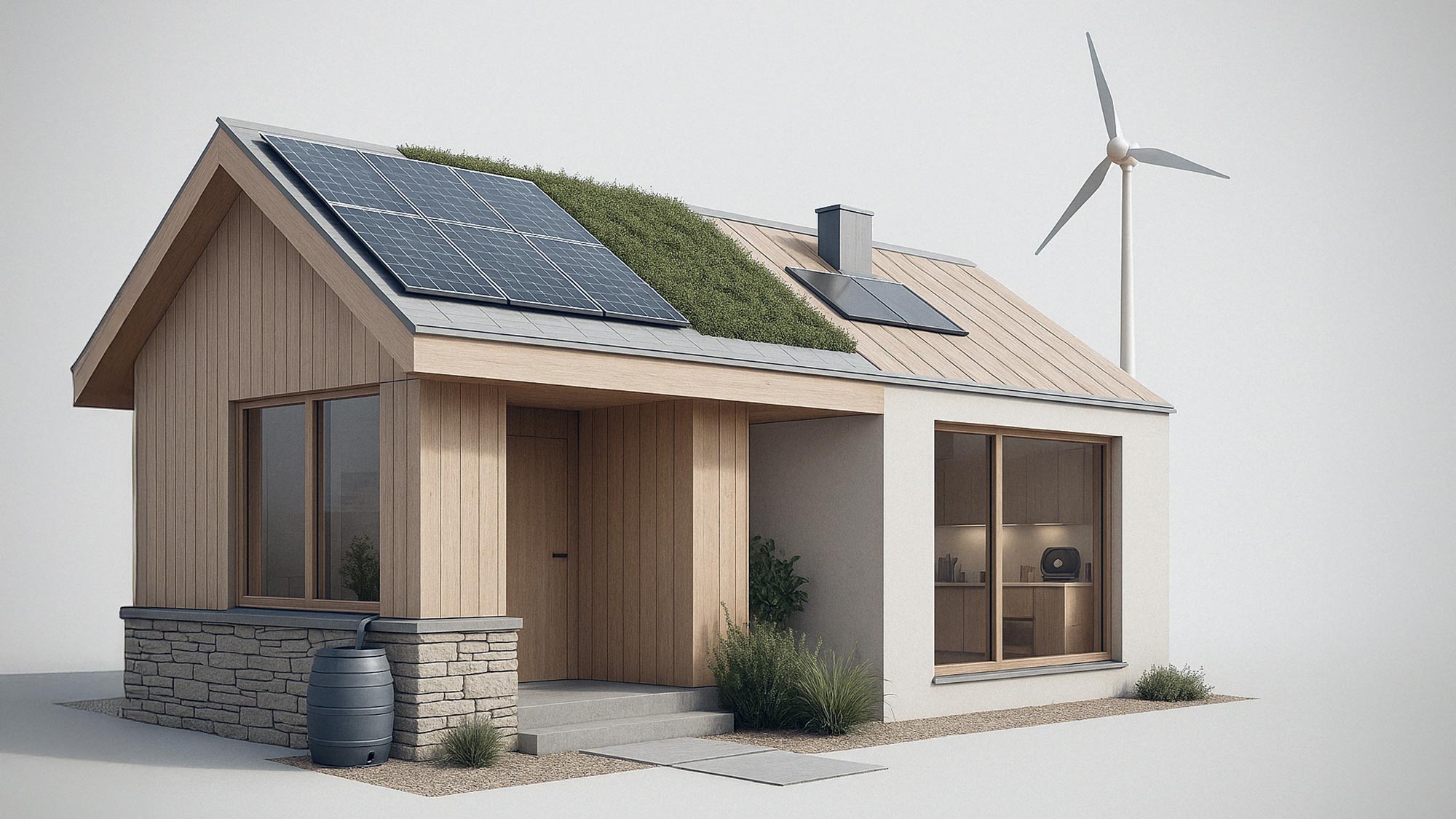As energy costs rise and environmental concerns grow, many homeowners turn to sustainable building practices to create energy-efficient homes. Sustainable building is not just about reducing a home’s environmental impact – it also provides long-term benefits such as lower utility bills, increased comfort, and a healthier living environment.
By adopting eco-friendly materials, energy-efficient appliances, and renewable energy systems, you can make a significant impact on both your wallet and the planet. Sustainable building practices are no longer just a trend – they are the future of residential construction.

Eco-Friendly Materials for a Greener Home
Traditional building materials like concrete, steel, and bricks are energy-intensive to produce and transport, making them less eco-friendly. Instead, sustainable homes often utilize materials that have a lower environmental impact. Reclaimed wood, recycled steel, and natural stone can also be incorporated into the design of a home to reduce the need for new resources.
When it comes to eco-friendly materials, the team behind Sustainably Certified Timber highlights the importance of finding reputable sources to make sure that the lumber used in construction is harvested responsibly, preserving biodiversity and supporting ethical forestry practices. Choosing non-toxic paints, finishes, and insulation materials can secure better air quality and a healthier living environment.
Smart Home Technologies for Energy Efficiency
Integrating smart home technologies into your sustainable home design can dramatically increase its energy efficiency. Smart thermostats, for example, allow you to adjust your home’s temperature remotely, optimizing heating and cooling schedules based on your daily routine. This means you won’t waste energy heating or cooling an empty home.
Motion-sensing lights and smart appliances also help reduce unnecessary energy consumption. For instance, dishwashers and washing machines that can detect load sizes and adjust water and energy usage accordingly prevent overuse. Solar panels are another powerful example of smart technology that can be integrated into your home.
Designing Homes with Passive Solar Principles
One of the most effective and natural ways to create an energy-efficient home is through passive solar design. This approach takes advantage of the sun’s energy to heat and cool your home without relying on external power sources. The strategic placement of windows, the use of thermal mass materials, and proper insulation can significantly reduce the need for mechanical heating and cooling.
For example, south-facing windows allow sunlight to enter during the winter months, warming the interior naturally. This design approach not only reduces energy consumption but also contributes to the home’s aesthetic appeal, making it both functional and beautiful.
Renewable Energy Systems: Solar, Wind, and Geothermal
Solar panels are the most common and widely recognized renewable energy source for homes. Wind turbines and geothermal systems can also be valuable options, depending on your location and energy needs. Wind energy can be harnessed with small, residential wind turbines that generate electricity by capturing the wind’s kinetic energy.
If you live in an area with consistent wind patterns, this can be an excellent complement to solar power. Geothermal energy systems use the constant temperature of the earth to heat and cool your home. A geothermal heat pump extracts heat from the ground in the winter and disperses heat into the ground during the summer.
Water Conservation and Energy Efficiency
Water usage and energy consumption are closely linked, as much of the energy used in a home goes toward heating water. By incorporating water-saving technologies like low-flow faucets, showerheads, and toilets, you can reduce both your water and energy consumption.
Water heaters can be more energy-efficient with the use of tankless water heaters, which heat water only when it’s needed, as opposed to constantly maintaining a hot water reservoir. Rainwater harvesting systems can be installed to capture and store rainwater for use in irrigation or even indoor plumbing. This reduces the demand for municipal water systems, cutting down on both water costs and energy usage related to water processing and distribution.
The Financial Benefits of Sustainable Building
Investing in sustainable building practices can seem like a big financial commitment upfront, but the long-term savings are undeniable. Energy-efficient homes require less maintenance and have lower operating costs, as they rely on less energy for heating, cooling, and lighting.
The initial cost of installing renewable energy systems or energy-efficient appliances can be offset by the savings you’ll see on your utility bills over time. Government incentives, tax credits, and rebates for green building practices can help reduce the financial burden of creating a sustainable home. Beyond the savings on utility bills, homes that are built with sustainable practices often have a higher resale value.

Sustainable building is more than just a trend – it’s a responsible approach to creating homes that are energy-efficient, cost-effective, and better for the environment. By using eco-friendly materials, integrating smart home technologies, and harnessing renewable energy sources, you can significantly reduce your home’s energy consumption and environmental impact.
The financial savings and long-term benefits of sustainable building practices are undeniable, and as technology continues to evolve, the possibilities for energy-efficient homes will only increase. By embracing sustainable building, you can create a home that not only benefits you and your family but also contributes to a greener, more sustainable future.
Disclaimer
This article is for informational purposes only and does not constitute professional construction, financial, or environmental advice. Readers should consult with licensed builders, energy consultants, or relevant government agencies to evaluate the suitability, cost, and regulatory compliance of sustainable building solutions for their specific circumstances.



